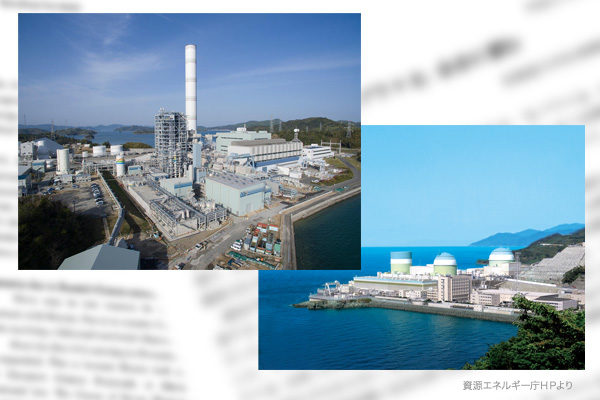The Japan Institute for National Fundamentals released policy proposals titled “The Answer to Decarbonization Is Nuclear Power” on April 12 calling for constructing 24 new and additional nuclear plants and exporting Japan’s advanced thermal power generation technologies to contribute to reducing carbon dioxide emissions, but the prospect for the realization of both proposals does not look bright, plunging leading power equipment manufacturers’ production capacity into an existential crisis.
Nuclear and thermal power plants bogging down
“The government does not assume the construction of new and additional nuclear plants or the replacement of existing ones,” said Economy, Trade and Industry Minister Hiroshi Kajiyama at a press conference on April 6. Until the 2011 Fukushima nuclear accident, Hitachi Ltd., Toshiba Corp. and Mitsubishi Heavy Industries Ltd. had led the world’s three nuclear power plant construction groups. During a decade after the accident, all nuclear plant export deals were aborted, with no domestic nuclear plant newly built. Equipment for producing pressure vessels, steam generators and other key nuclear plant components has begun to be dismantled. Relevant skilled engineers, including International Vocational Training Competition gold medalists, have been transferred to divisions for other products or to other companies. Manufacturers of pumps, valves, control systems and other products for nuclear plants have withdrawn from their production or gone out of business. Human resources training and skill succession have become difficult. The remark by Kajiyama has aggravated such trend.
Meanwhile, Prime Minister Yoshihide Suga in an online U.S.-led climate summit on April 22 and 23 offered Japan’s target of cutting greenhouse gas emissions in 2030 by 46% from fiscal 2013. This means no new thermal power plants would be constructed. Present thermal power plants fired by liquefied natural gas adopt a gas turbine combined cycle, known as GTCC, which combines gas and steam turbines to generate electricity. Their thermal efficiency is as high as 62%, meaning that GTCC plants can generate more electricity with less fuel. Coal can also be gasified for combined cycle power plants to improve fuel efficiency and reduce carbon dioxide emissions. These coal-fired power plants are called integrated gasification combined cycle, or IGCC, generators. IGCC plant exports were expected to contribute to cutting CO2 emissions from coal-fired power generation in foreign countries. But the Japan Bank for International Cooperation has decided not to provide financing for exporting the world’s first IGCC technology that Japan has taken much time to develop, making the export almost impossible.
Master craftsmanship should not be lost
Steam turbines are used for both nuclear and thermal power plants. Their rotary shafts measure 2 to 4 meters in diameter, with an allowable machining error limited to 0.05 millimeter. They measure 6 to 10 meters in length, weighing up to 150 tons. Thousands of turbine blades are attached to the large rotary shaft that rotates 3,600 times per minute. Such steam turbines represent the fruit of master craftsmanship originating from technology for main battleship cannons. Steam turbine production equipment may also go out of use without power plant construction or exports. Technologies, once lost, would be difficult to restore.
If nuclear and thermal power plant production equipment that supported high economic growth in Japan is dismantled, Japan will have to depend on imports from China or South Korea for building new and additional nuclear plants or replacing existing ones that are necessary to achieve carbon neutrality by 2050. China expanded its share of the global coal-fired power plant market to 53% in 2020 by exporting cheaper, non-combined-cycle plants. While China cool-headedly seeks economic gains, Japanese cabinet ministers’ remarks designed to be received well by the media could lead key domestic industries to decline. Is this all right?
Tadashi Narabayashi is a specially appointed professor at the Tokyo Institute of Technology and a director at the Japan Institute for National Fundamentals.


